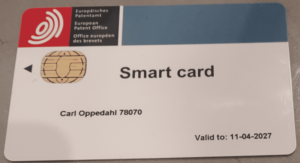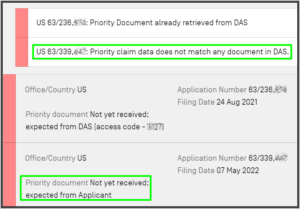Yesterday I posted a blog article asking readers to let me know which ePCT topics they want me to teach sooner than other topics. I listed fifteen topics. I provided a very long and tedious questionnaire by which readers could indicate their personal rankings of the fifteen topics, as “urgent” or “average urgency” or “not urgent”. Fifty-four readers responded, for which I am quite grateful. Here you can see what they said: Continue reading “Which ePCT topics you want me to teach sooner than others!”
Which ePCT topics do you want me to teach sooner than others?
Update! You can see the results here.
Hello dear readers. How time flies! It was a mere ¾ of a year ago that I announced (blog article) my plans to teach fifteen webinars on ePCT topics (as distinguished from PCT topics). Now I really plan to get moving on these webinars. I should mention that these webinars will be free of charge, thanks to sponsorship from WIPO. Now what I ask is that readers please tell me which ePCT topics they want me to teach sooner than others. Continue reading “Which ePCT topics do you want me to teach sooner than others?”
Daylight saving time and WIPO
Keep in mind that Switzerland will turn off daylight saving time today, October 30, 2022. Those who are filing documents at the International Bureau — documents that need a same-day filing date — should check to make sure they know what time it is in Switzerland as of today.
For US filers, keep in mind that the US will not turn off DST today. The US will turn off DST a week from now, on November 6, 2022.
US filers who are getting ready to file a document at the IB should thus pay close attention during this next week to what time it is in Switzerland.
Most readers of my blog will appreciate that the correct terminology is not “Daylight Savings Time” but “Daylight Saving Time”.
The practical effect for most US filers is that for the next week, you get an extra hour to e-file. For example if you are in the Mountain Time Zone, normally you rush to file by 4PM if need a same-day filing date at the IB. But for the next week you can file as late as 5PM and you will still get a same-day filing date at the IB.
A recently issued patent that will expire 51 years after its filing date

A US patent that issued recently (August 9, 2022) made me smile for several reasons. This is a truly remarkable patent, as I will discuss. Continue reading “A recently issued patent that will expire 51 years after its filing date”
Two letters that were sent today to Director Vidal
(Update: on January 6, 2023, the Director indirectly responded to these two letters. You can read about it here.)
Hello readers. You will recall that a few days ago I urged you to consider signing two letters to USPTO’s Director Kathi Vidal (blog posting, October 7). Both letters have now been signed and have been sent to Director Vidal.
-
- One of the letters is about erroneous information in official Filing Receipts regarding publication dates. You can see the signed letter here.
- The other letter is about missing information in official Filing Receipts regarding whether or not a Foreign Filing License has been granted. You can see the signed letter here.
The chief person who made these letters possible is Krista Jacobsen, a patent practitioner in Silicon Valley. She drafted the letters and finalized them with suggestions from professional colleagues. Many practitioners signed the letters. Today she sent them to the Director. I hope readers will join me in being grateful to Krista for this work.
Of course what also made the letters possible is the many patent practitioners who signed the letters.
Let’s hope that Director Vidal will respond to Krista with good news of corrective steps that the USPTO will take to address the problems that are highlighted in the two letters.
Please sign two letters to the Director
Hello folks. Would you prefer it if the USPTO were to reduce how many mistakes it makes in official patent Filing Receipts? Then please review and sign the following two letters:
- Krista Jacobsen’s letter about publication date errors in filing receipts has by now thirteen signatures. The signers have collectively received over six thousand filing receipts in the past ten years, and have collectively paid over ten million dollars to the USPTO in the past ten years.
- Krista Jacobsen’s letter about missing FFL information has by now ten signatures. The signers have collectively received over five thousand filing receipts in the past ten years, and have collectively paid over seven million dollars to the USPTO in the past ten years.
These letters will close for signature this next Monday at noon Eastern Time. I have signed both letters. Why don’t you join those signers, by signing these two letters yourself?
Carl
How often do you check the Systems Status page?

If you regularly make use of TEAS or PAIR or Patentcenter or EFS-Web, you probably find yourself checking the USPTO Systems Status and Availability web page (screen shot at right) from time to time.
Wouldn’t it be nice if somehow you could be notified automatically when that web page changes? Well, now you can be notified automatically, if you choose to participate in a beta test of my new change-detection system. Continue reading “How often do you check the Systems Status page?”
Today is the day for the Polish patent office
 Yes, you heard it here first (blog article). On August 5, 2022, I was the first to tell you this very exciting news about the Polish patent office becoming trendy, modern, and up-to-date. Continue reading “Today is the day for the Polish patent office”
Yes, you heard it here first (blog article). On August 5, 2022, I was the first to tell you this very exciting news about the Polish patent office becoming trendy, modern, and up-to-date. Continue reading “Today is the day for the Polish patent office”
With ePCT, always have at least two kinds of 2FA

There are quite a few ways to set up two-factor authentication in ePCT. Last week there was a problem with the SMS-type 2FA in ePCT, and users who had failed to set up a second type of 2FA found themselves unable to log in. This offers a reminder that you should always have at least two types of 2FA set up with your WIPO user ID. I am delighted to report that I have successfully gotten it set up so that I can use my EPO smart card as a form of 2FA in ePCT. Continue reading “With ePCT, always have at least two kinds of 2FA”
YANTAePCT (Yet Another Nice Thing About ePCT)

From time to time I have commented upon nice things about ePCT. Here is one more. Continue reading “YANTAePCT (Yet Another Nice Thing About ePCT)”
